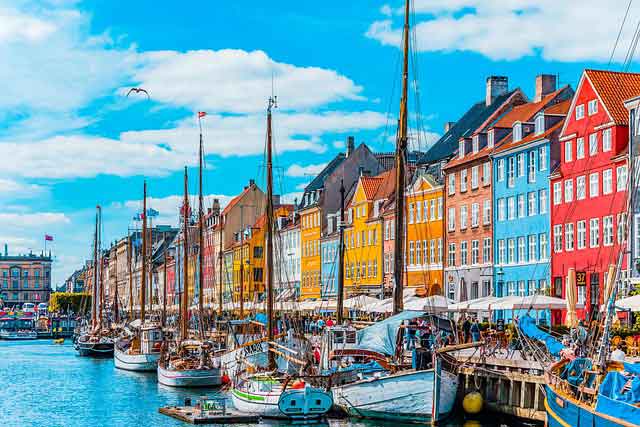What Makes Copenhagen the World’s Safest City?
by Oviyaa Venkateshwaran | 28 August 2021
According to the Economist, Copenhagen ranked as the safest city in the world in 2021. The city was previously ranked 8th on the list which now has replaced Tokyo for the top spot.
Toronto and Singapore were named the second and the third on the list that ranked 60 cities worldwide.
The evaluation consists of 76 indicators across 5 main frameworks:
- Personal
- Health
- Infrastructure
- Digital
- Environmental Security (new additional category)

Urban planning plays an important role in keeping a city environment safe and lively.
By introducing a new category of environmental security for evaluation, the importance of sustainability issues and climate change adaptation measures was revealed.
The main reason for making Copenhagen top the world’s safest city list is the environmental security pillar.
Copenhagen performed better in the new ‘environmental security’ category than the top 3 countries in previous years. The city’s sustainable planning and strategies could likely have made it recognizable in the category.
Copenhagen has been practicing sustainability for decades. The city is formulating various strategies to reduce carbon emissions and provide a safe, livable environment for people.
How Is a City Considered Environmentally Secure?
EIU scientists measured cities in two categories of data:
Inputs – sustainability master plan, renewable energy incentives, and waste management systems.
Outputs – air quality, urban forest cover, and water stress.
Researchers found that many evaluated cities had environmental sustainability plans, which reveals the importance shown by city leaders.
However, several cities had the highest gap between inputs and outputs with only minimal actual results. Richer countries had high ambitious plans but didn’t achieve them.
How Copenhagen Meets the Sustainability Goals?
The city’s Mayor plans to tackle all 17 Sustainable Development Goals developed by the UN.
Solid plans for climate sustainability were noticed during the evaluation process in environmental security. Copenhagen has the second-best air quality in Europe due to its biking culture and infrastructure that reduces pollution from cars.
With green mobility, Copenhagen offered a safe and sustainable infrastructure for transport. Now about 29% of all trips are made on a bike. The city is one of the safest urban areas for cyclists. Copenhagen targets to get 75% of the population to make all their trips on foot, by bike or through public transit by 2025.
Managing waste and resources sustainability is another main criterion for evaluation. Copenhagen has achieved around 45% waste recycling in 2018 and has targets to attain nearly 70% waste recycling by 2024.
The researchers looked for the presence of climate action plans while evaluating cities. Climate action plans normally include adaptation, buildings and energy, land transport, waste, council operations, forestry, and aviation. The city of Copenhagen has sustainability action plans including the one to become the first carbon-neutral city in the world by 2025. The city’s carbon emission has been reduced by 42% since 2005.
The city is focusing on energy consumption, green mobility, wind turbines, geothermal energy, biomass, solar power, and energy-retrofitted buildings to achieve carbon targets.
Copenhagen’s active climate and sustainability plans have allowed them to achieve a high position in the environmental security pillar. In addition to that, the city performed very well in other pillars. Collectively, this made the Economist name Copenhagen as the safest city in the World.